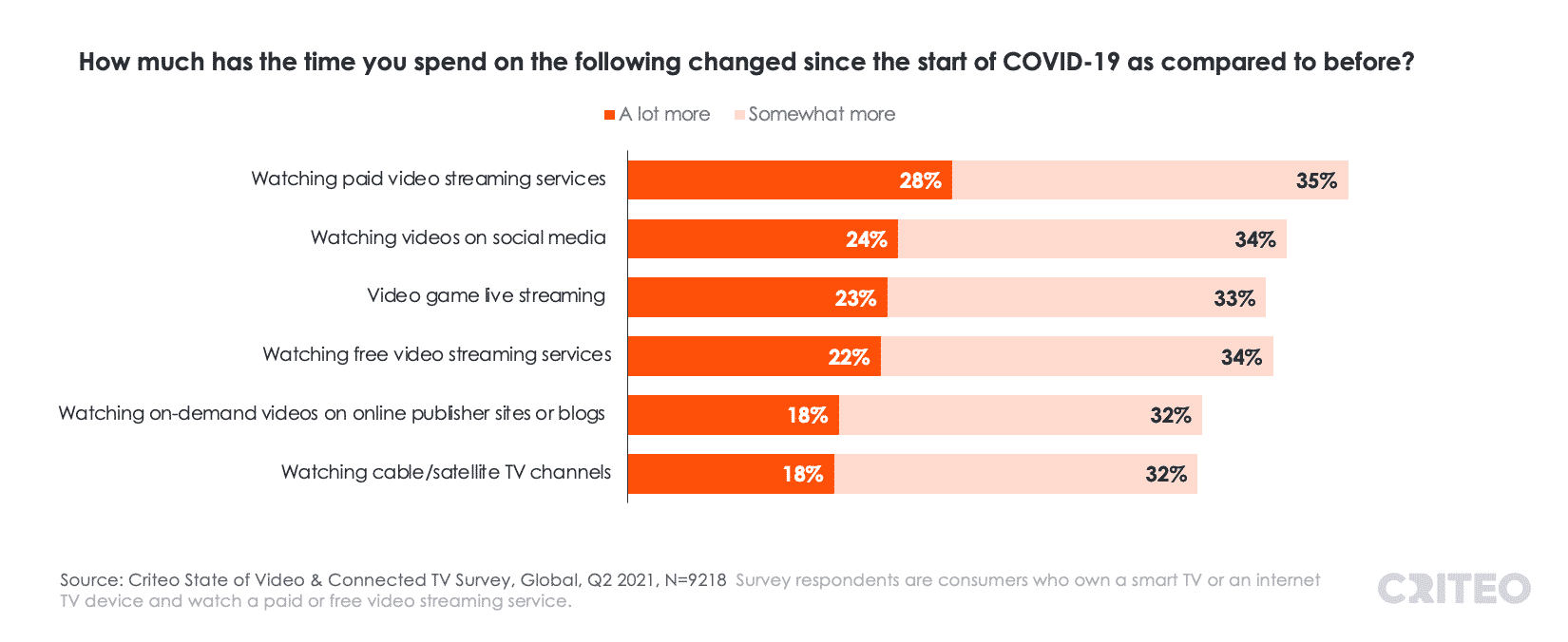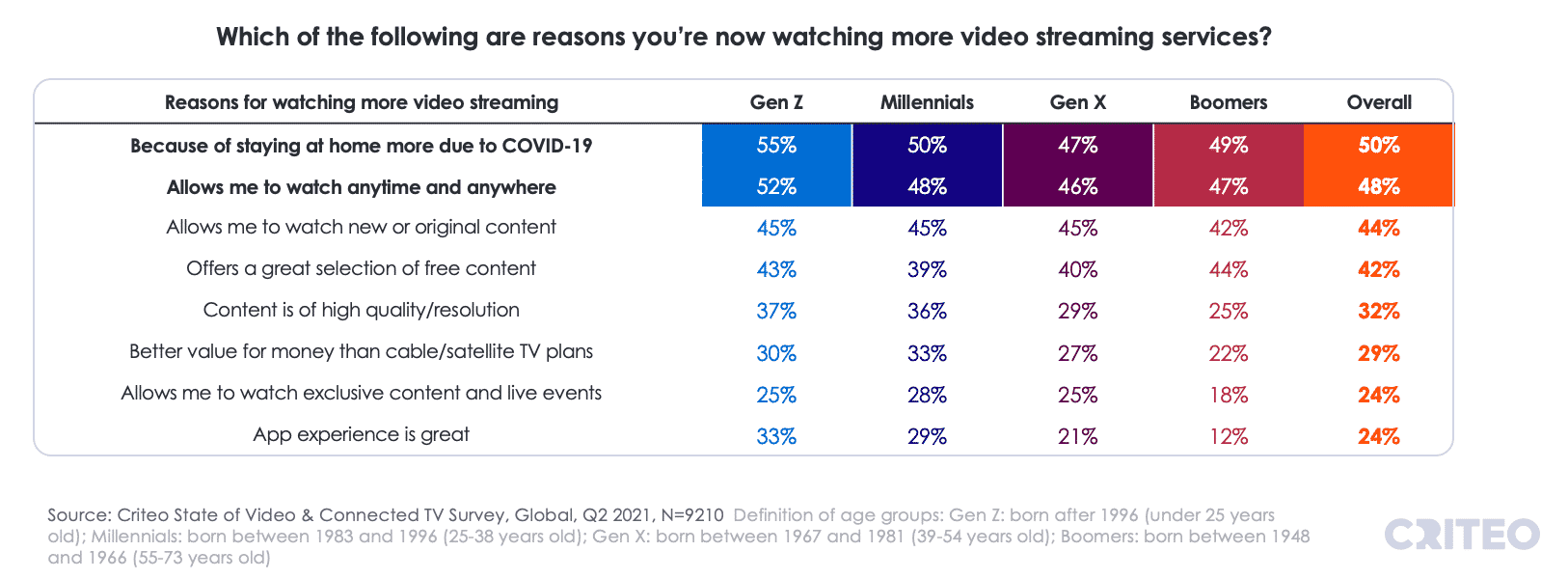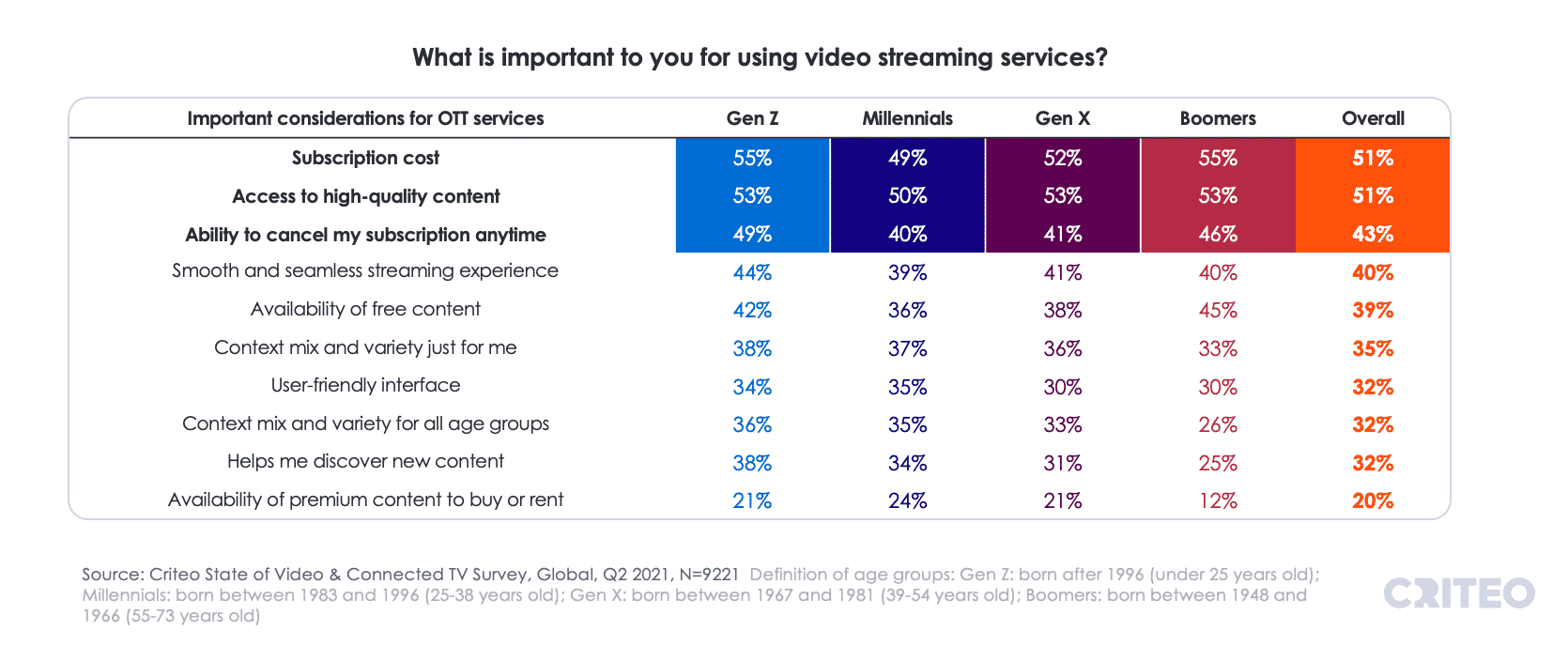
TV viewers value the convenience, choice, and content originality of streaming services, even if three quarters of us don’t rate its value more highly than traditional pay TV.
In a recent survey about consumer attitudes to video conducted by Criteo, only one in four of 9,000 respondents of a global sample said streaming represented better value for their money than cable or satellite TV.

It’s likely that this doesn’t apply to using just one SVOD, but rather to the bundling of multiple services charged to the wallets of each household.
Nonetheless, other factors outweigh cost, and we are set to see binge streaming soar.
In addition to spending time at home, the flexibility of watching anytime and anywhere, and the availability of new and original content are the top reasons for watching more streaming content. Two in five viewers enjoy the availability of free content.
The survey found that “most consumers spend over five hours per week watching streaming content — and this will keep increasing.”

According to PwC, Criteo notes, “video streaming revenue is forecast to grow 60% from 2020 to 2025 and reach $94 billion by the end of 2025, with most coming from subscription fees.”
READ MORE: 5 Video Streaming Trends Marketers Need to Know (Criteo)
NOW STREAMING — BEHIND THE SCENES OF FAN-FAVORITE SERIES:
As the streaming wars rage on, consumers continue to be the clear winners with an abundance of series ripe for binging. See how your favorite episodics and limited series were brought to the screen with these hand-picked articles plucked from the NAB Amplify archives:
- True (True) Crime: Making Dennis Lehane’s “Black Bird”
- How “The Staircase” Is a True-Crime Drama in All the Ways
- “Ms. Marvel” (Literally) Brings Some Girl Power to the MCU
- “Severance:” Now, About Solving the Work/Life Balance…
- “Dark Winds:” Developing a New (Overdue) Detective Genre
As per other surveys, the amount of TV watching accelerated during 2020 across both paid and free services. A third of consumers plan to watch even more paid or free video streaming services in 2022.
Though most consumers watch video streaming on the television — more than half use their laptop or smartphone to stream content.
This is most prevalent among youngest viewers. Three quarters of Gen Z watch video streaming on their cell, while nearly two-thirds use their computer or smart TV.
Across every generation, subscription cost and the quality of video content are the most important factors when consumers pick a streaming service. Other important attributes include the flexibility to cancel their subscription anytime and the availability of free content.



